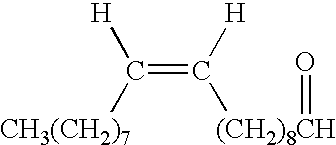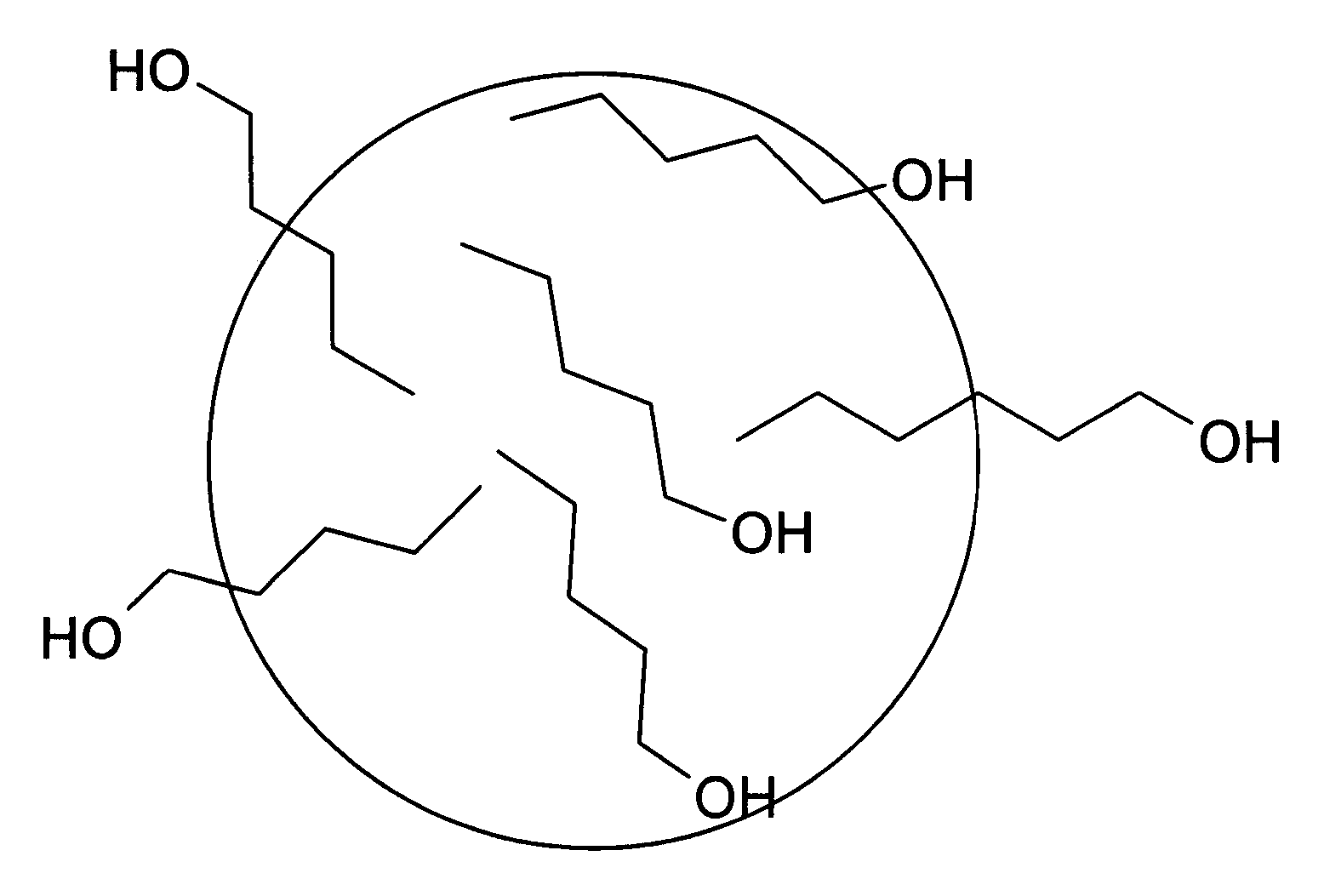Microspheres as a delivery vehicle for bio-active agents useful in agricultural applications
a technology of bioactive agents and microspheres, applied in the field of elastomeric microspheres, can solve the problems of soluble agents that may or may not be soluble in polymerized elastomeric microspheres or in their monomeric precursors, and achieve the effect of ensuring lasting power to environmental forces and convenient application and handling
- Summary
- Abstract
- Description
- Claims
- Application Information
AI Technical Summary
Benefits of technology
Problems solved by technology
Method used
Image
Examples
example 1
Example 1 illustrates the incorporation of an agriculturally active agent (E-11-tetradecenol) tacky, hollow elastomeric microspheres using an in-situ addition process. A 500 ml baffled reaction flask equipped with a stirrer, thermocouple, and nitrogen inlet was charged with a water phase containing 225.0 grams of deionized water and 3.0 grams of STEPANOL AMV surfactant (ammonium lauryl sulfate, 25% solids in water, available from Stepan). An oil phase consisting of 72.0 grams of isooctyl acrylate, 3.0 grams of acrylic acid, 3.76 grams of E-11-tetradecenol (available from Bedoukian Research Inc.) and 0.40 gram of dissolved LUCIDOL 75 initiator (75% active benzoyl peroxide available from Elf Atochem) was added to the reactor and the agitation set at 350 rpm. The dispersion was heated to 65.degree. C. At 65.degree. C., the reactor was degassed with nitrogen. A slight rise in temperature in the reaction was seen to 66.degree. C. After eight hours at 65.degree. C., the mixture was cooled...
example 2
Example 2 illustrates the incorporation of an agriculturally active agent (E-11-tetradecenol) into tacky, small elastomeric microspheres using a post-polymerization addition process. A water phase was prepared by mixing 2280 grams of deionized water and 62.17 grams of STANDAPOL-A surfactant (ammonium lauryl sulfate, 25% solids in water, available from Henkel) in a 4000 ml beaker. An oil phase consisting of 1521.7 grams of isooctyl acrylate was added to the water phase, resulting in a white dispersion upon mixing. Mixing with an homogenizer (Model 15MR available from APV Gaulin) at 19,305 kPa (2800 psi) yielded monomer droplets having particle sizes less than 5 micrometers.
3586.4 grams of the white dispersion were transferred to a 4000 ml baffled reactor equipped with a stirrer, nitrogen inlet and temperature probe. The dispersion was heated to 65.degree. C. Once at 65.degree. C., 6.34 grams of LUCIDOL-75 initiator (75% active benzoyl peroxide available from Elf Atochem) was added an...
example 3
Example 3 illustrates the incorporation of an agriculturally active agent (E-11-tetradecenol) into non-tacky, solid elastomeric microspheres using an in-situ addition process. A 500 ml baffled reaction flask equipped with a stirrer, thermocouple, and nitrogen inlet was charged with a water phase containing 227.4 grams of deionized water and 0.85 gram poly(vinyl alcohol) polymeric stabilizer (87-89% hydrolyzed poly(vinyl alcohol) having a molecular weight -13,000-23,000 available from Aldrich Chemical). An oil phase consisting of 72.0 grams of isooctyl acrylate, 3.0 grams of acrylic acid, 1.5 grams 1,4-butanediol diacrylate crosslinking agent, 7.5 grams of E-11-tetradecenol (available from Bedoukian Research Inc.) and 0.40 grams of dissolved LUCIDOL 75 initiator (75% active benozyl peroxide available from Elf Atochem) was added to the reactor and the agitation set at 400 rpm. The dispersion was heated to 65.degree. C. At 65.degree. C., the reactor was degassed with nitrogen. A slight...
PUM
| Property | Measurement | Unit |
|---|---|---|
| particle size | aaaaa | aaaaa |
| diameters | aaaaa | aaaaa |
| Tg | aaaaa | aaaaa |
Abstract
Description
Claims
Application Information
 Login to View More
Login to View More - R&D
- Intellectual Property
- Life Sciences
- Materials
- Tech Scout
- Unparalleled Data Quality
- Higher Quality Content
- 60% Fewer Hallucinations
Browse by: Latest US Patents, China's latest patents, Technical Efficacy Thesaurus, Application Domain, Technology Topic, Popular Technical Reports.
© 2025 PatSnap. All rights reserved.Legal|Privacy policy|Modern Slavery Act Transparency Statement|Sitemap|About US| Contact US: help@patsnap.com



